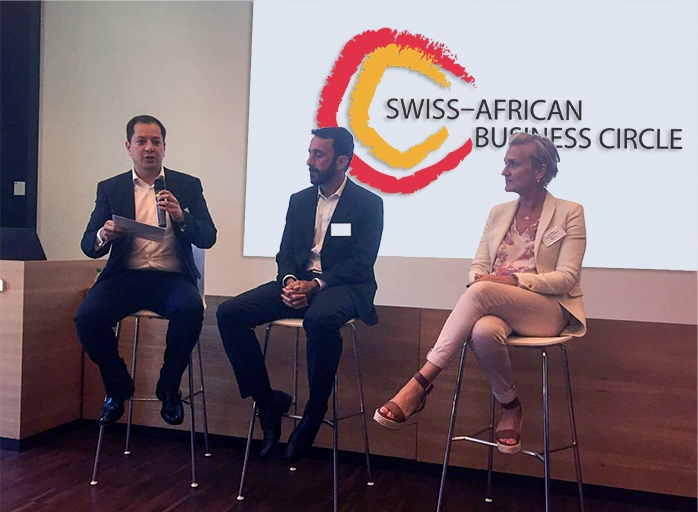Dr John Sargent, Co-Founder of BroadReach, with Dr. Ann Aerts, Head of the Novartis Foundation and Fred Werneck, Co-Founder and Advisor to Clarmondial
Our world is facing real challenges: conflict, inequitable access to resources, healthcare and services, climate change, disease outbreaks and droughts and famines. Many of these challenges are interconnected, and no one government, organization, company or person can solve them alone. But these problems must be solved if people, and businesses, are to thrive. We therefore need a new paradigm of inclusive business to build both a profitable and more equitable global future.
This means developing new ways of partnering as we engage in the global economy where shareholders and local stakeholders’ needs are considered. This often means forming partnerships between multiple stakeholders with overlapping and complementary areas of focus. I was recently invited to facilitate a session at the Swiss-Africa Business Circle entitled: “How to build and grow sustainable and multi-stakeholder partnerships”, where I was given the opportunity to swap ideas on this topic with Dr. Ann Aerts, Head of the Novartis Foundation and Fred Werneck, Co-founder and Advisor to Clarmondial.
We all agreed that these kinds of multi-stakeholder partnerships don’t happen overnight, nor do they run themselves. They take careful planning, monitoring and managing. While each sector is different, each partnership and program have their own unique nuances, the following high-level themes emerged as the foundational pillars of successful multi-stakeholder partnerships:
DEFINE SUCCESS TOGETHER
One of the most important factors at the outset of any multi-stakeholder partnership is to define success together, so that it can be measured and celebrated. “A shared goal is an essential part of a multi-stakeholder partnership,” explains Dr. Aerts. “Then there will be shared glory”. She added that a shared measurement system is essential in achieving these aims.
Dr. Aerts and the Novartis Foundation convene local and global partners to catalyze sustainable healthcare models to improve access and health outcomes. They are working to address hypertension, and have recently starting a pilot project with partners in Sao Paulo in Brazil, Dakar in Senegal, and Ulaanbaatar in Mongolia. They are working with a set of global and local partners from different sectors and have selected a partner focusing on measurement – Centers for Disease Control (CDC).
TRANSPARENCY, TRUST AND ACCOUNTABILITY ARE THE CORNERSTONES OF PARTNERSHIP
Transparency is key to building long-term partnerships. When all partners play with open cards, a level of trust can be established that is the foundation for success. Werneck explains how Clarmondial focusses on practical, profitable and creative solutions for social and environment businesses and their funders. “We evaluate partner programs and assess their funding needs, their risks, and their financial and non-financials targets,” explains Werneck. “We structure partnership deals to attract additional budget and support, so that the local partners can further develop and expand their activities – in exchange for greater accountability and transparency.” By sharing information, funders can partner to help the projects become bigger and more successful than operating alone.
DEFINE CLEAR ROLES AND RESPONSIBILITY
Finally, through our experience at BroadReach – working with governments and partners to improve access to health for underserved populations around the world – it is vital to clearly define roles and accountabilities. You bring in partners for different reasons, so state upfront what those reasons are. And then have a mechanism for holding everyone accountable, and for conflict resolution.
These are long-term arrangements, and they aren’t going to run themselves. The idea of truly inclusive partnerships is relatively new, it is early days and we are all still trying to figure out how to effectively work together rather than against each other. There are many examples of successful multi-stakeholder partnerships and we need to learn from these and focus on sharing best practice and scale these models. Common to all the success stories are the setting up of clear boundaries and lines of communication in the quest to build a more equitable future for all.

